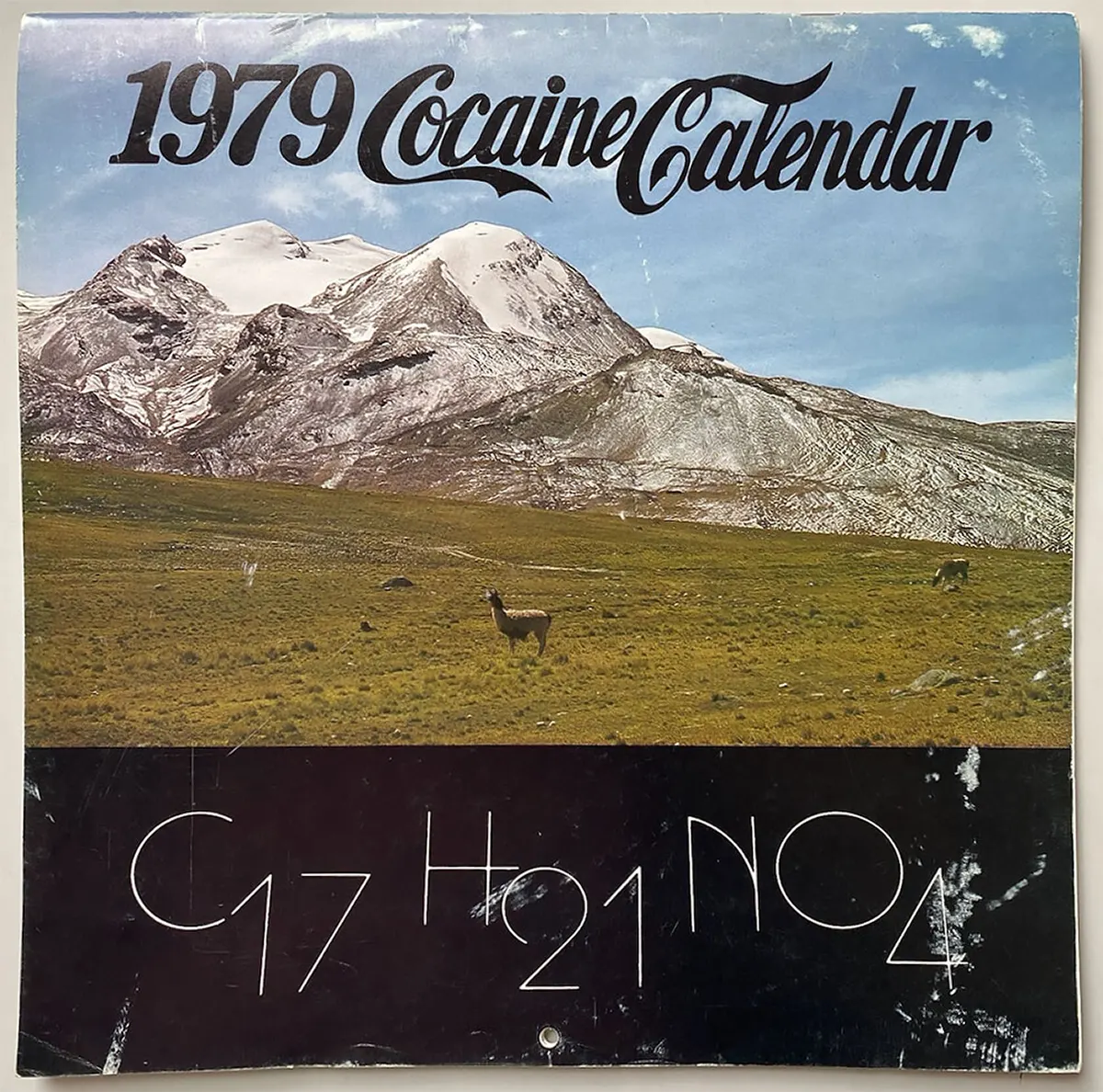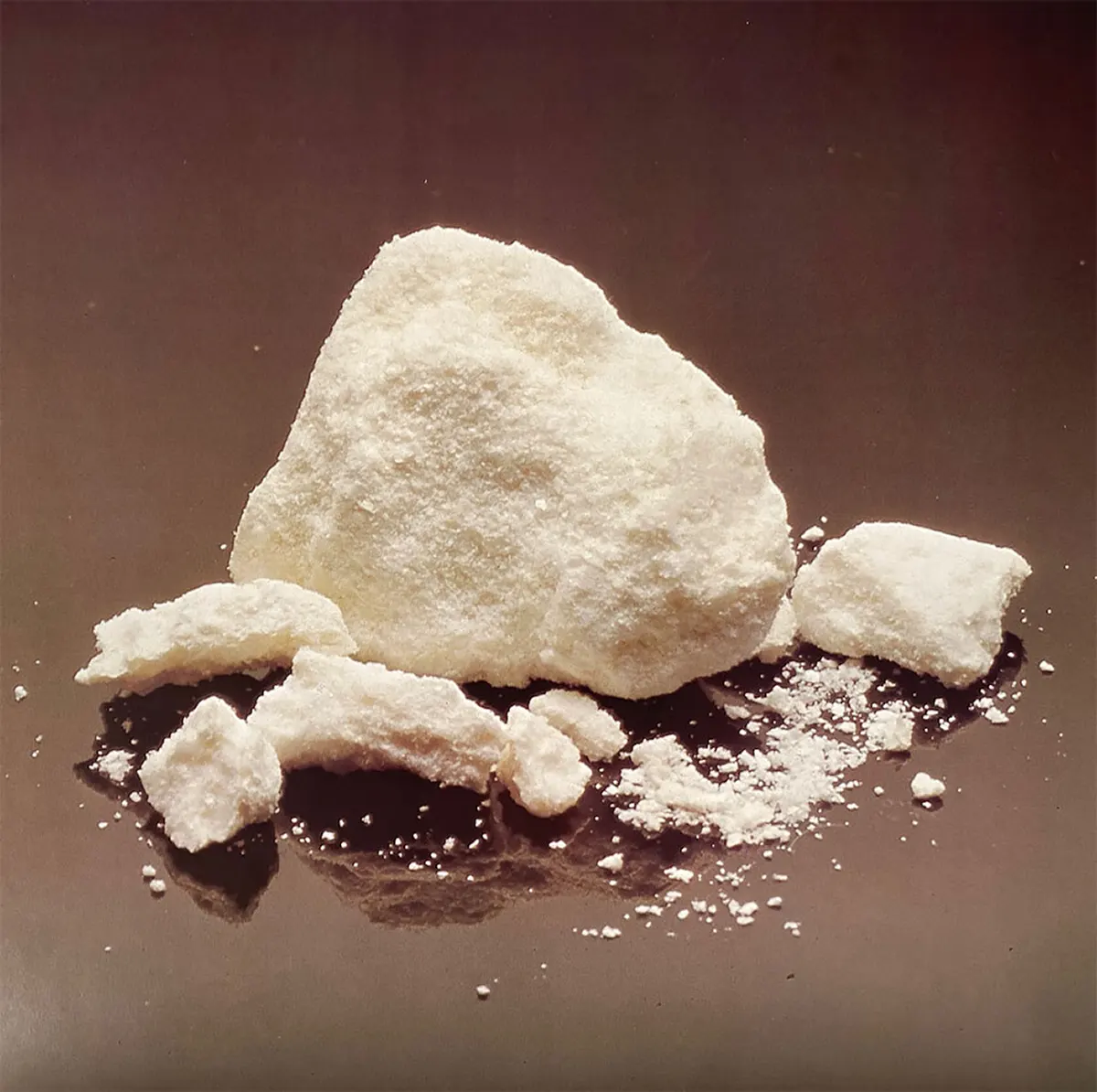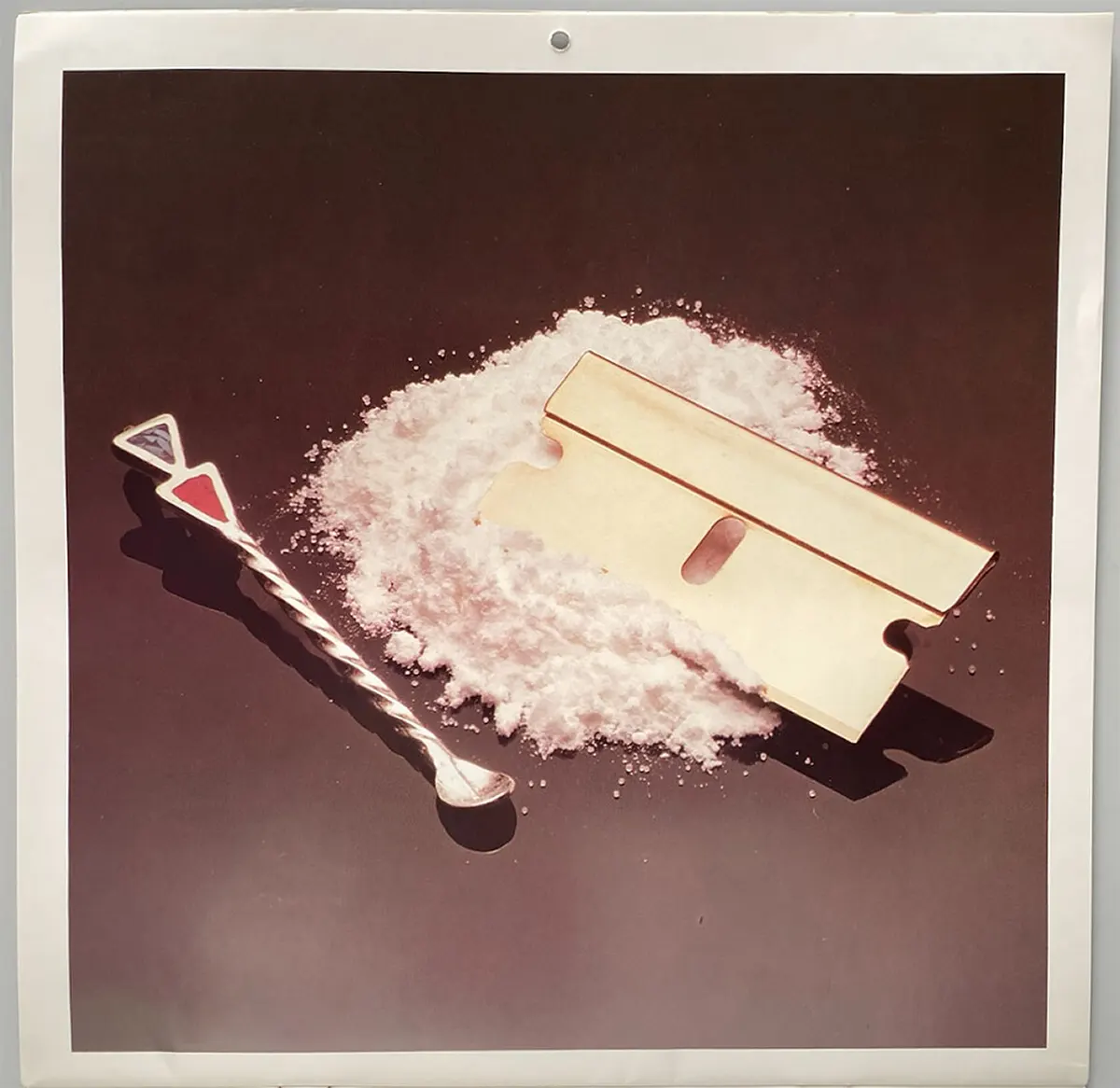Each month’s photo shows the coca plant at a different stage of its transition to cocaine powder, from its source in the Andes to its destination as a Christmas gift, and of course, users enjoying it. The months are accompanied by quotes about cocaine from different sources. There’s also a Brief History of Cocaine and a Chronology of its history from 900 A.D. to 1979 on the front matter side. The calendar was published in San Francisco by Red Dog Productions. And, look at the font style of the calendar’s title… Does it look familiar? The calendar dropped just before the era of President Reagan and the beginning of The War On Drugs, when cocaine was described in US government reports as “not physically addictive, and usually does not result in serious social consequences, such as crime, hospital emergency room admissions, or death”. Cocaine use experienced a surge in popularity in the 1970s, peaking in the 1980s. During this time, cocaine was associated with celebrities, high rollers, and glamorous parties. Rolling Stone magazine profiled the decade as being one of “extreme” sexual activity, drug use, and, of course, rock music. A survey conducted by the magazine found that 20 percent of respondents admitted to trying cocaine. Furthermore, as the Civil Rights movement notched up victory after victory for black Americans, the negative association between race and cocaine eroded. Cocaine became a drug that rock stars and celebrities used to stay up all night, have unbridled fun, and be part of a scene that was irresistibly decadent and attractive, making it the ultimate social lubricant and status symbol. But cocaine couldn’t keep up with the rabid demand among the social elite. Towards the end of the 1980s, cocaine manufacturers found themselves with the peculiar problem of not having enough of the drug to satisfy their customers. Corners had to be cut. Suppliers used simple baking soda to dilute the powdered, pure cocaine, making it cheaper to make and buy. This newer, dirtier form of cocaine was no longer the purview of the rich and famous; now, even the disenfranchised and poverty-stricken could get their hands on the drug. Creating this form of cocaine entails heating it until it produces a cracking sound, giving it its name: crack cocaine, freebase cocaine, or simply “crack.” When it hit the market, crack cocaine caught on in a big way. The Primary Care journal writes that hospitalizations for medical emergencies as a result of using crack cocaine increased by over 100 percent from 1985 to 1986, the time period in which inner cities and gangs started to distribute it. According to Gallup, cocaine abuse had gone from a celebrity problem into a “truly terrifying issue.” Gang warfare and the notion of “crack babies” (children exposed to crack cocaine as fetuses) led to 42 percent of Americans claiming that crack (and other forms of cocaine) was the “most serious problem for (American) society”.
(Photo credit: Monsterchildren.com / River Oaks Treatment Center / Worth Point). Notify me of new posts by email.
Δ Subscribe













